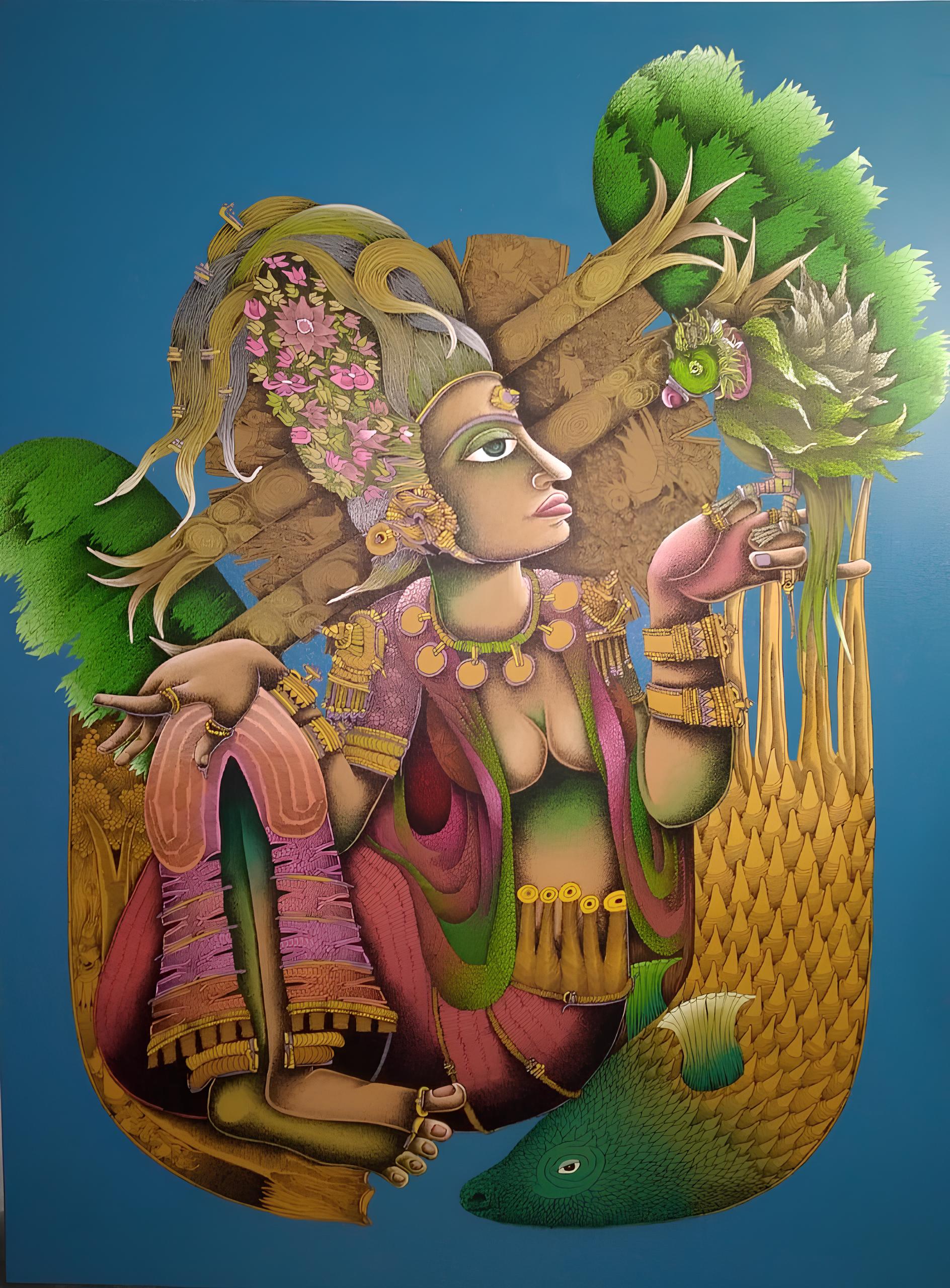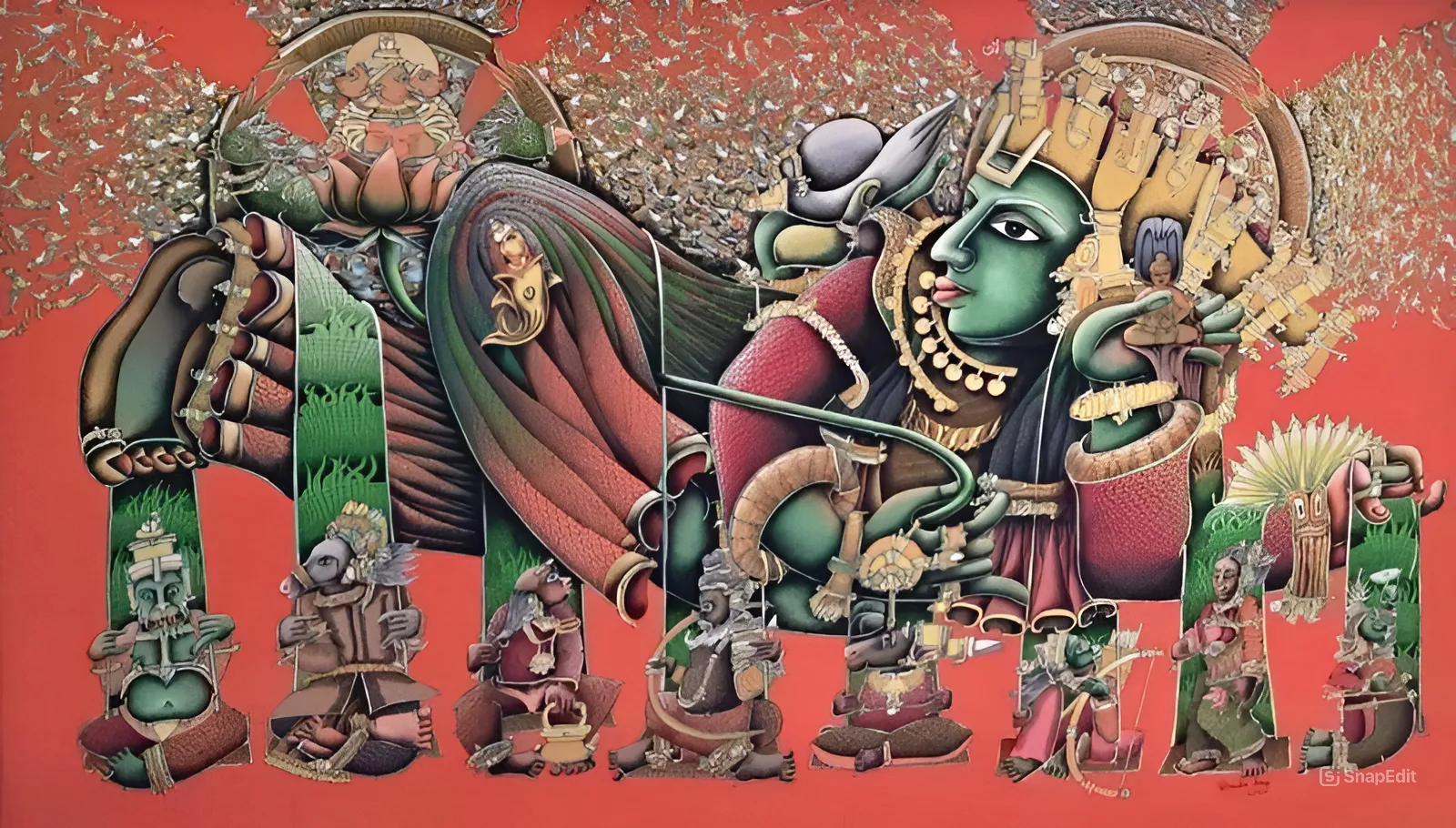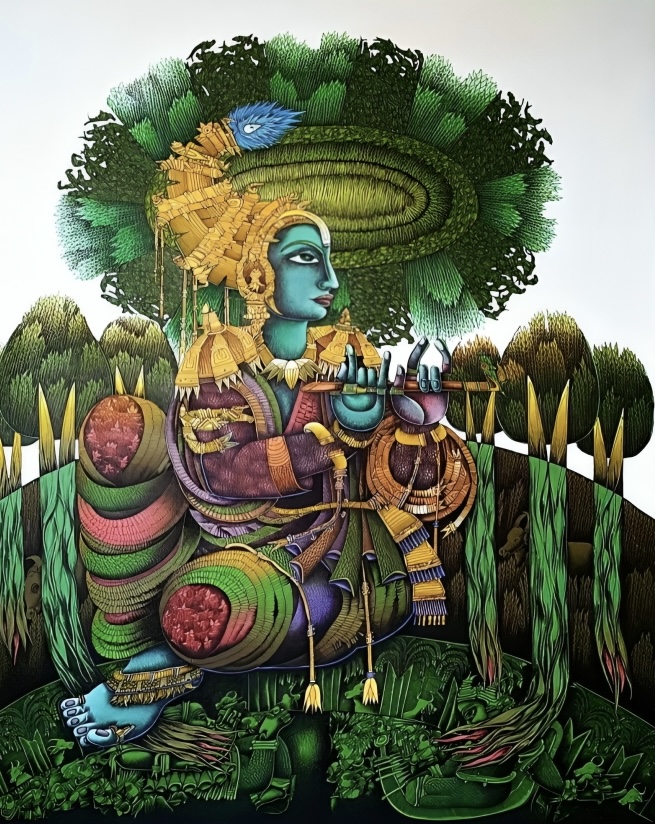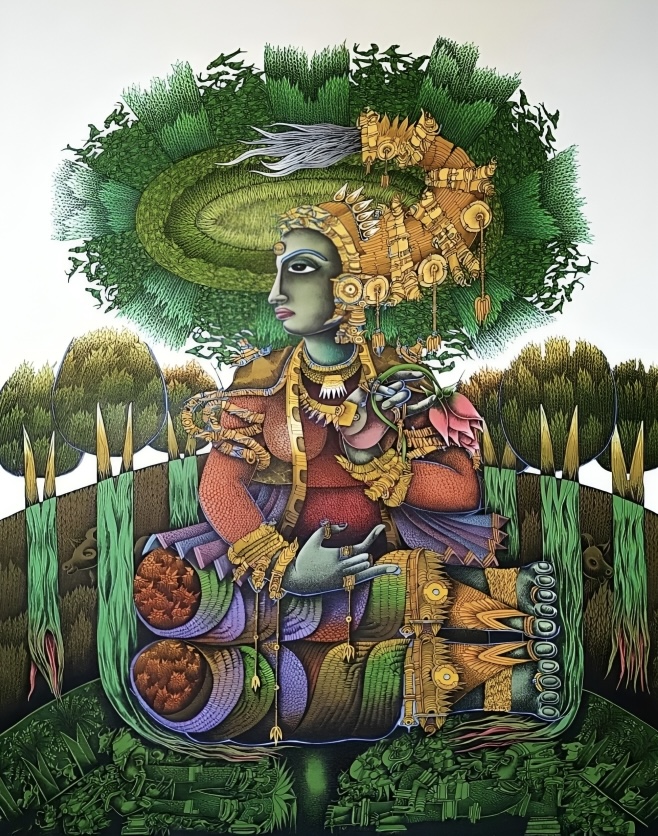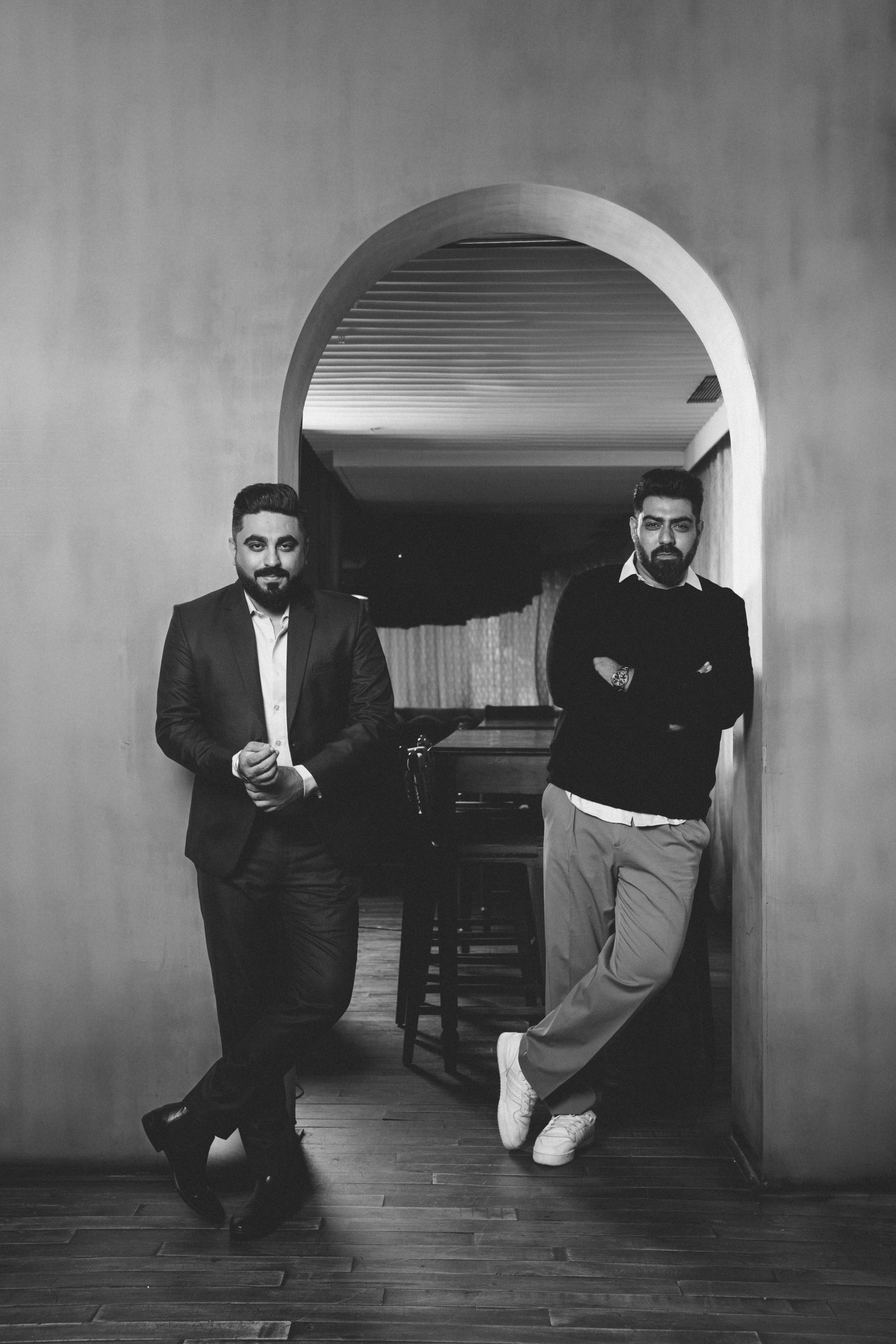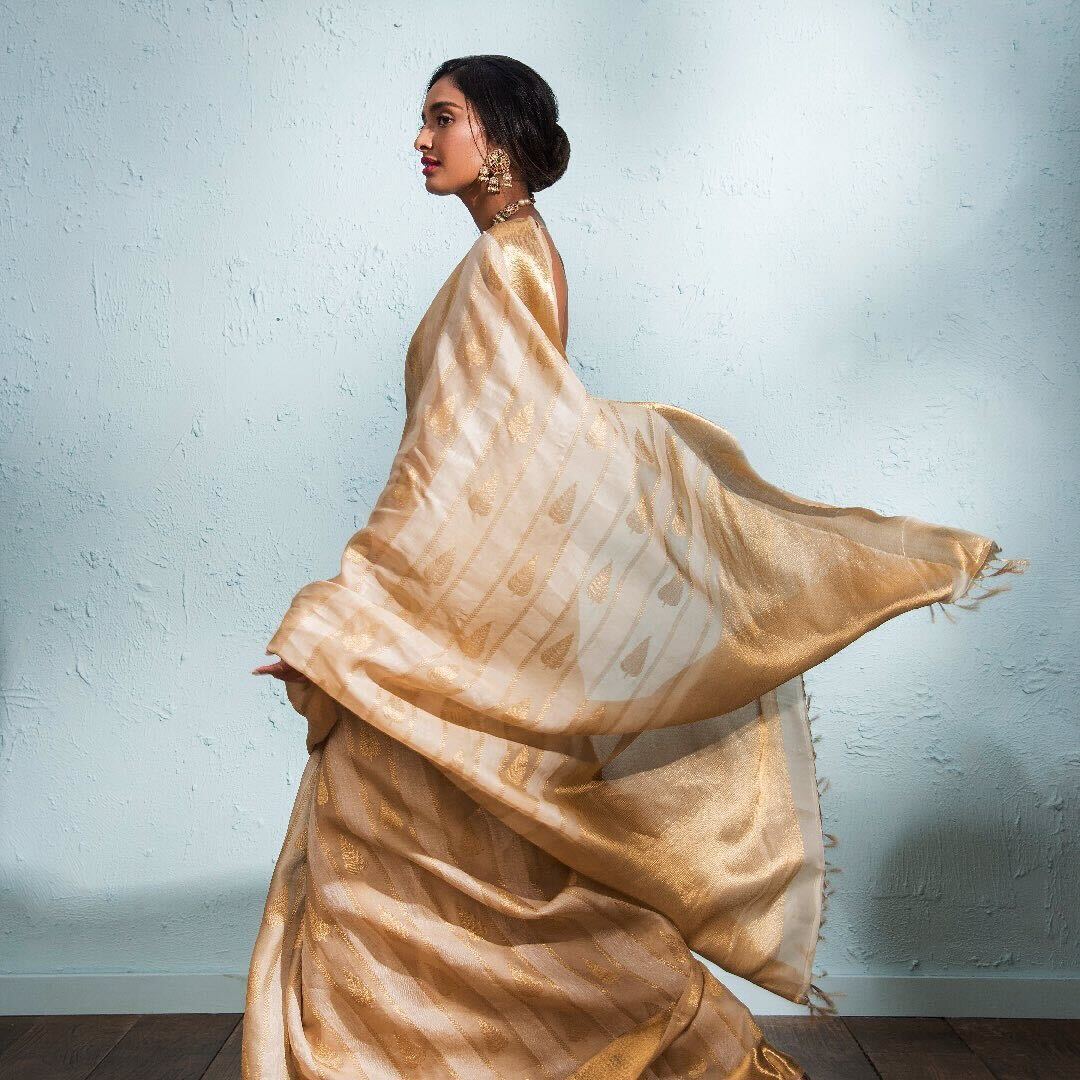How does one create mythological art from lived experience? Ask Jitendra Dangi whose masterpieces are borne out of a childhood where he attended and performed in Ramleelas in his locality. Ram was alive; the forest was alive, as were Sita and Laxman. And Jitendra could sense beauty and art beyond the most obvious moral lessons. For him the mythological reservoir is endless since it is not about representing a particular narrative with its familiar beginning, middle and end; but capturing the sentiments of characters within a moment. Can art lingering on the spiritual and emotional state of such noble figures ever exhaust itself? Never, according to Jitendra, who has lost count of the works he has created over the past sixteen years.
Much has changed in this duration. The initial years were those of youth, and the ideas out of which he created were restless and diverse. Today he finds himself much calmer, or as he says, sthir. He finds himself drawn to the figure of Krishna and his recent trip to Benaras has him pondering over the images of boats and the serene water he experienced at the ghats. Those familiar with his style, tribal with modernistic elements, anticipate the details which will emerge in lines and colours. While the canvas is intricate, the overall impact is one of spiritual contentment. His Radha Krishna set illustrates this harmony of colour, design and peaceful contemplation, definitive of his art.
The Divine Assembly — myth and meditation rendered in a palette of vermilion
As a child he was self taught, and his talent was unmistakable. Even before any formal training he had produced 3,000 paintings on the Ramayana. He went on to do a graduation and post graduation in Drawing, Painting and Indian History. He picked up on techniques from artists like Yusuf Khan and interacted with many more who would visit Bhopal’s Bharat Bhavan. That also included international animation and graphic artists. He went on to receive the Raza Award, the Lokmanya Tilak National Award and the Kala Parishad Award. The rest is history, or in his case, mythology. Today he owns a studio in Bharat Bhavan and likes his quiet life in Bhopal where he can ponder over a canvas for days without interruption. This peace is hard bought. He refuses commercial commissioned works and dislikes judging art competitions. He finds it strange to declare one artistic expression as better than others. Freelancing gives him the freedom to work on subjects of his choice, at his own pace. He is deeply committed to the beautifying aesthetic. Images of pain and cruelty, do not, in his opinion, belong as adornments on walls in a home. Samkalin yug has inspired him to deal with only certain themes. There is a profound sentiment beneath this careful rejection and selection. It is higher than mere pleasure; it is deeper than mere provocation.
As of today he is the only Indian artist deeply and single mindedly committed to mythological art. Others dabble in various forms and styles. But he has found his anchor and it has not let him down. He admits to being astounded at his capacity and mythology’s potential. This is a sensitive subject too. There are people who love how he presents deities and gods in certain moments, there are others who find calm in a face when they were expecting anguish. For instance, he recounts how certain people object to some of the paintings in his Govardhan series where the Govardhan Parvat is resting on Krishna’s hand instead of the forefinger. Jitendra is aware of how personal these mythologies are to his audience but there will always be artistic liberty and his holistic vision often dominates the painting.
As a young artist, he was inspired by Satish Gujral, Vasudev S Gaitonde, Thota Vaikuntam, A Ramachandran and his mentor Yusuf Khan. Today, his studio is open to younger artists — to visit, observe and learn, just as he once did. However, he cannot picture himself taking structured classes. His art feels too alive and spontaneous to him — and that is what he desires to perpetuate.
Sacred stillness in saturated hues — Krishna and Radha, rendered through Dangi’s surreal symbolism.
Words by Ayesha Suhail
Featured image: “Srishti” by Jitendra Dangi
